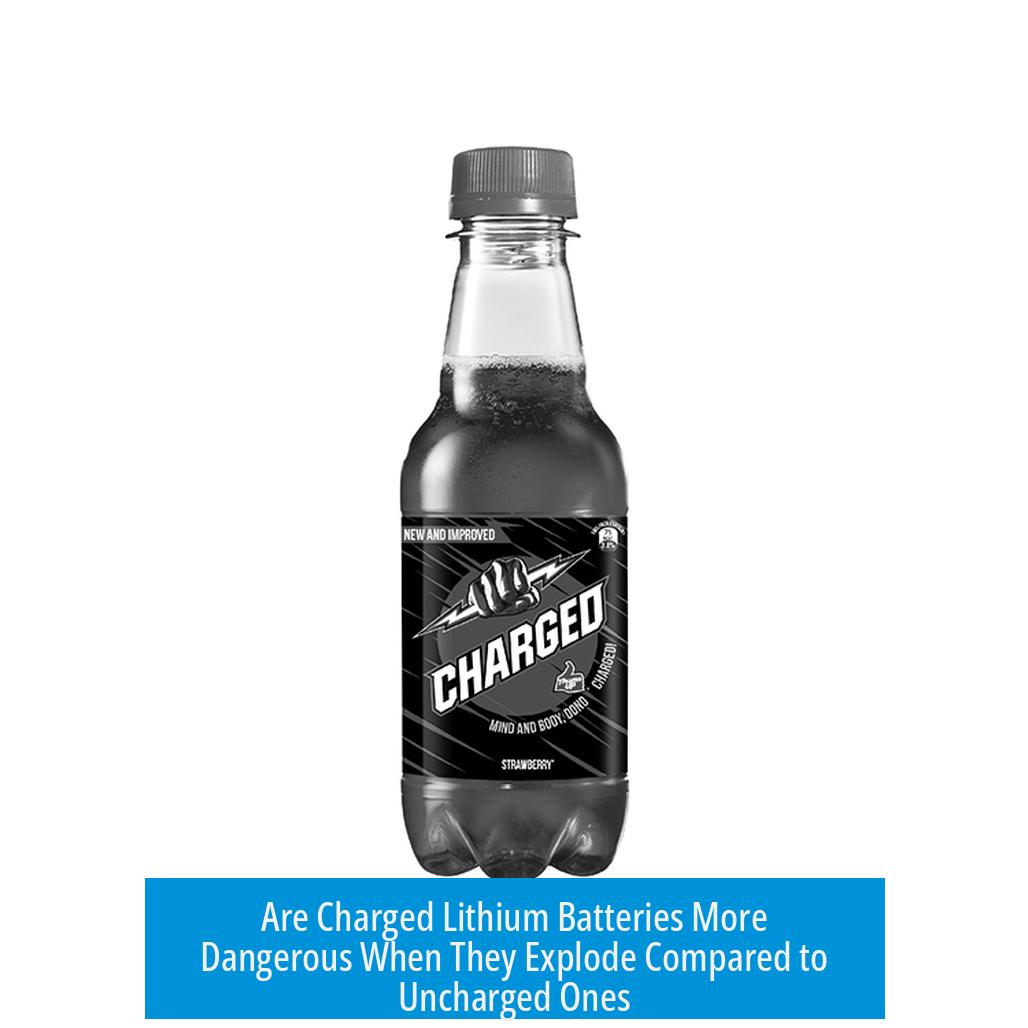Are Charged Lithium Batteries More Dangerous When They Explode Than Uncharged Ones?
Yes, charged lithium batteries are more dangerous when they explode compared to uncharged ones because they contain significantly more stored energy. The energy released during failure results in higher temperatures and a more violent reaction, thus increasing the risk and severity of fires and explosions.
Energy Storage and Release in Lithium Batteries
Lithium-ion batteries store electrical energy chemically. When fully charged, they hold maximum electrochemical potential. Any damage—such as internal short circuits—can release this energy suddenly as heat. This generates extreme temperatures and ignites flammable materials inside the cell.
Charging the battery increases the amount of lithium ions separated from the cathode and accumulated in the anode. These ions represent stored chemical energy ready to react if containment fails. This reaction is exothermic and accelerates rapidly once started.
Consequences of Explosions in Charged vs. Uncharged Batteries
- Charged batteries: They burn hotter and faster. The rapid release of stored energy causes intense heat buildup. This can ignite nearby combustible materials and spread fire.
- Uncharged or discharged batteries: They still contain flammable solvents and materials that can burn. However, they have less stored energy to drive or sustain a vigorous reaction. Thus, their capacity to ignite secondary fires is lower.
A municipal waste facility manager confirms that discharged lithium batteries burn but less intensely and are less likely to trigger fires beyond their own material. Charged batteries, by contrast, easily spread fire to other waste components.
Understanding Lithium Battery Chemistry and Stability
Charge Level Effects on Stability
Lithium batteries require a certain amount of charge to remain chemically stable. Partial discharge can reduce this stability. Batteries kept close to full charge (about 75%) retain better safety characteristics during storage.
Interestingly, over-discharged batteries may become more prone to internal failures, due to structural and chemical degradation. This paradoxically shows that both extremes—overcharge and complete discharge—pose distinct risks.
Risks of Overcharging
Overcharging a lithium battery introduces severe safety hazards. When exposed to incorrect charging parameters:
- Metallic lithium may deposit on the anode surface without reintegrating properly. This forms irregular structures called dendrites.
- Dendrites can pierce the separator, connecting the anode and cathode. This internal short circuit causes rapid heating and ignition.
- Chemical side reactions may generate gases inside the cell, causing swelling (“spicy pillow” effect) and eventual rupture.
This rupture exposes reactive lithium to air and moisture, rapidly triggering fires or explosions. Proper chargers and adherence to device specifications dramatically reduce these risks.
Fire Behavior and Safety Insights
Fire management experts highlight the difference in burning intensity between charged and uncharged batteries. Upon ignition, charged batteries raise fire temperatures considerably, accelerating combustion of surrounding materials.
At municipal waste sites, charged batteries contribute to fire escalation, prompting urgent intervention measures, such as moving burning waste rapidly to incinerators to confine damage.
Summarizing the Safety Perspectives
| Battery State | Energy Content | Explosion Risk | Fire Severity | Secondary Fire Risk |
|---|---|---|---|---|
| Fully Charged | High | High due to stored chemical energy | Severe, high temperatures and flame spread | High |
| Partially Charged (Storage Level) | Moderate | Moderate; balanced for stability | Moderate | Moderate |
| Discharged/Uncharged | Low | Lower; less energy available | Less severe burning | Lower |
Analogy to Understand the Danger Difference
An analogy compares charged lithium batteries to dynamite—exploded dynamite releases much more energy than undetonated dynamite. Similarly, a charged battery possesses ready-to-release energy that intensifies explosions or fires.
Key Points to Remember
- Charged lithium batteries contain more stored chemical energy, increasing explosion severity.
- Internal shorts cause rapid energy release, generating extreme heat and igniting flammable materials inside the battery.
- Discharged batteries still pose fire risks but result in less intense burns and lower ignition potential of surrounding materials.
- Proper storage charges (~75%) maximize battery stability and safety.
- Overcharging leads to dangerous dendrite formation, internal shorts, battery swelling, and potential fires.
- Charged battery fires pose higher hazards in waste management and emergency responses.
- Use correct chargers and follow manufacturer instructions to avoid overcharging risks.





Leave a Comment